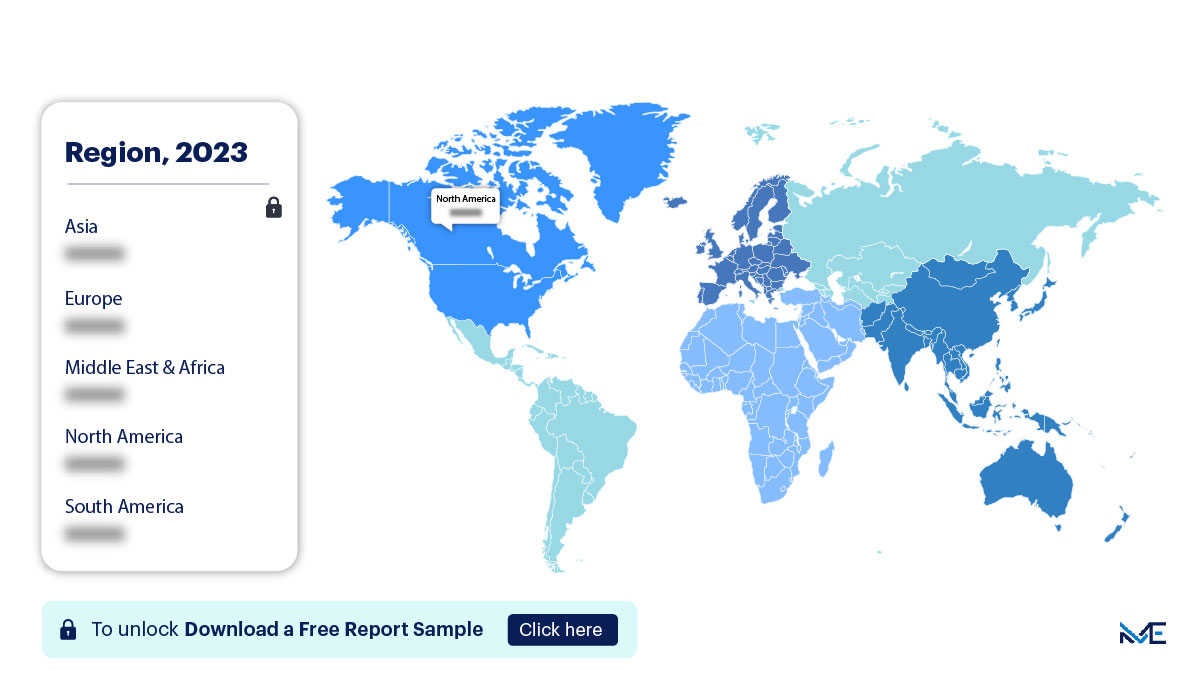Market Snapshot
| Study Period | 2019-2032 |
| Base Year | 2023 |
| Forcast Year | 2023-2032 |
| CAGR | 9.39 |


Gain accurate insights regarding the negative impacts of COVID-19 on all markets and industries
Download Sample PdfReport Overview
The Freight Transport Market size is estimated to grow at a CAGR of 5.25% between 2022 and 2032. The market size is forecast to increase by USD 29,765.89 million. The growth of the market depends on several factors, including the expansion of global trade, the rise in e-commerce activities, and the increasing demand for efficient and sustainable transportation solutions. Freight transport refers to the movement of goods and cargo from one location to another, typically using various modes of transportation such as trucks, ships, airplanes, and trains. It plays a crucial role in the supply chain, ensuring that products reach their intended destinations efficiently and on time.
Freight Transport Market Overview:
Drivers:
One of the key factors driving the freight transport market growth is the expansion of global trade. With globalization, businesses are increasingly engaged in international trade, leading to a surge in the movement of goods across borders. This has created a significant demand for freight transport services to facilitate the shipping of products to various parts of the world. As a result, the freight transport market is experiencing substantial growth, especially in regions with robust international trade activities.
Moreover, the rise in e-commerce activities has contributed to the growth of the freight transport industry. E-commerce platforms rely heavily on logistics and transportation services to deliver products to consumers. The growing popularity of online shopping has led to an increased volume of shipments, further boosting the demand for freight transport services.
Trends:
A key trend shaping the freight transport market growth is the adoption of sustainable and eco-friendly transportation solutions. Environmental concerns and regulations have prompted the transportation industry to seek cleaner and more efficient ways to move goods. This has led to innovations in electric and hybrid vehicles, as well as the implementation of sustainable practices such as route optimization and the use of alternative fuels.
Additionally, the integration of digital technologies in freight transport is revolutionizing the industry. Technologies like IoT (Internet of Things), blockchain, and advanced analytics are being used to track and manage shipments in real-time, improving efficiency and transparency in the supply chain. These digital advancements are expected to continue driving the market's growth during the forecast period.
Restraints:
One of the key challenges hindering the freight transport market growth is the increasing congestion and infrastructure limitations in major transportation hubs. Many urban areas and ports are facing congestion issues due to the high volume of freight traffic. This congestion not only leads to delays but also increases transportation costs and environmental impact. Addressing these infrastructure limitations and congestion challenges is crucial for the efficient movement of goods.
Furthermore, fluctuations in fuel prices and the rising cost of energy pose economic challenges for the freight transport industry. Fuel costs are a significant operational expense for transportation companies, and volatile fuel prices can impact their profitability. Finding cost-effective and sustainable energy solutions remains a concern in the industry.
Freight Transport Market Segmentation By Mode:
The road transport segment is estimated to witness significant growth during the forecast period. Road transport plays a vital role in the freight industry, especially for the last-mile delivery of goods. Trucks are the primary mode of transportation for moving goods within cities and regions. The growth of e-commerce and the need for quick deliveries have increased the demand for road transport services. Additionally, advancements in trucking technology, including the development of electric and autonomous trucks, are expected to further drive the growth of this segment.
Freight Transport Market Segmentation By Type:
The containerized freight segment is experiencing substantial growth in the market. Containerization has revolutionized the way goods are transported globally. Shipping containers provide a standardized and efficient way to move goods via ships, trucks, and trains. The use of containers simplifies the handling and tracking of cargo, reducing the risk of damage and theft. As international trade continues to expand, the demand for containerized freight services is expected to rise.
Regional Overview:

Download the report summary now!
Request pdf Sample
North America is estimated to contribute 38% to the growth of the global freight transport market during the forecast period. The region's strong economy, extensive road and rail networks, and robust international trade relationships make it a significant player in the freight transport industry. The United States and Canada are major contributors to the market, with well-developed transportation infrastructure and a high volume of freight movements.
In 2020, during the COVID-19 pandemic, the global freight transport market faced challenges due to disruptions in supply chains and reduced consumer demand. However, as the world recovers from the pandemic and international trade rebounds, the market is expected to regain momentum.
Freight Transport Market Customer Landscape:
The freight transport market industry report includes an analysis of the customer landscape, covering various stages of the adoption lifecycle from early adopters to late adopters. It also highlights key purchase criteria and factors influencing price sensitivity to help companies tailor their growth strategies accordingly.
Major Freight Transport Market Companies:
Companies in the freight transport market are implementing various strategies to enhance their presence and competitiveness. These strategies include strategic alliances, partnerships, mergers and acquisitions, geographical expansion, and the launch of innovative transportation solutions.
- Maersk Group: Maersk is a global leader in container shipping and logistics services, offering end-to-end freight solutions.
- FedEx Corporation: FedEx is a prominent provider of express delivery and logistics services, catering to businesses and consumers worldwide.
- CMA CGM Group: CMA CGM is a major player in container shipping, providing comprehensive maritime and logistics solutions.
- UPS Inc.: UPS is a leading global provider of transportation and logistics services, serving customers in over 220 countries and territories.
- DHL International GmbH: DHL offers a wide range of express and logistics services, connecting businesses and markets worldwide.
The competitive landscape of the market includes information about these companies and their strengths and weaknesses. Companies are categorized based on their focus, market dominance, and strategic positioning.
Segment Overview:
The freight transport market report provides revenue forecasts at global, regional, and country levels and offers an analysis of the latest trends and growth opportunities from 2019 to 2032.
- Mode Outlook (USD Million, 2019 - 2032)
- Road Transport
- Rail Transport
- Maritime Transport
- Air Transport
- Others
- Type Outlook (USD Million, 2019 - 2032)
- Containerized Freight
- Bulk Freight
- General Freight
- Geography Outlook (USD Million, 2019 - 2032)
- North America
- The United States
- Canada
- Europe
- The United Kingdom
- Germany
- France
- Rest of Europe
- APAC
- China
- India
- South America
- Brazil
- Argentina
- Chile
- Middle East & Africa
- Saudi Arabia
- South Africa
- Rest of the Middle East & Africa
RESEARCH METHODOLOGY
A research methodology is a systematic approach for assessing or conducting a market study. Researchers tend to draw on a variety of both qualitative and quantitative study methods, inclusive of investigations, survey, secondary data and market observation.
Such plans can focus on classifying the products offered by leading market players or simply use statistical models to interpret observations or test hypotheses. While some methods aim for a detailed description of the factors behind an observation, others present the context of the current market scenario.
Now let’s take a closer look at the research methods here.
Secondary Research Model
Extensive data is obtained and cumulated on a substantial basis during the inception phase of the research process. The data accumulated is consistently filtered through validation from the in-house database, paid sources as well reputable industry magazines. A robust research study requires an understanding of the overall value chain. Annual reports and financials of industry players are studied thoroughly to have a comprehensive idea of the market taxonomy.
Primary Insights
Post conglomeration of the data obtained through secondary research; a validation process is initiated to verify the numbers or figures. This process is usually performed by having a detailed discussion with the industry experts.
However, we do not restrict our primary interviews only to the industry leaders. Our team covers the entire value chain while verifying the data. A significant number of raw material suppliers, local manufacturers, distributors, and stakeholders are interviewed to make our findings authentic. The current trends which include the drivers, restraints, and opportunities are also derived through the primary research process.
Market Estimation
The market estimation is conducted by analyzing the data collected through both secondary and primary research. This process involves market breakdown, bottom-up and top- down approach.
Moreover, while forecasting the market a comprehensive statistical time series model is designed for each market. Macroeconomic indicators are considered to understand the current trends of the market. Each data point is verified by the process of data triangulation method to arrive at the final market estimates.
Final Presentation
The penultimate process results in a holistic research report. The study equips key industry players to undertake significant strategic decisions through the findings. The report encompasses detailed market information. Graphical representations of the current market trends are also made available in order to make the study highly comprehensible for the reader.
Personalized Business Report Tailored to Your Requirements
- Our expert analysts collaborate directly with you to comprehend your specific needs.
- Get data on regions, segments, competitors, and vendors of your choice.
- Information is presented in alignment with your exact preferences and formatting.
Free Sample Report
"Find new revenue generation opportunities"

